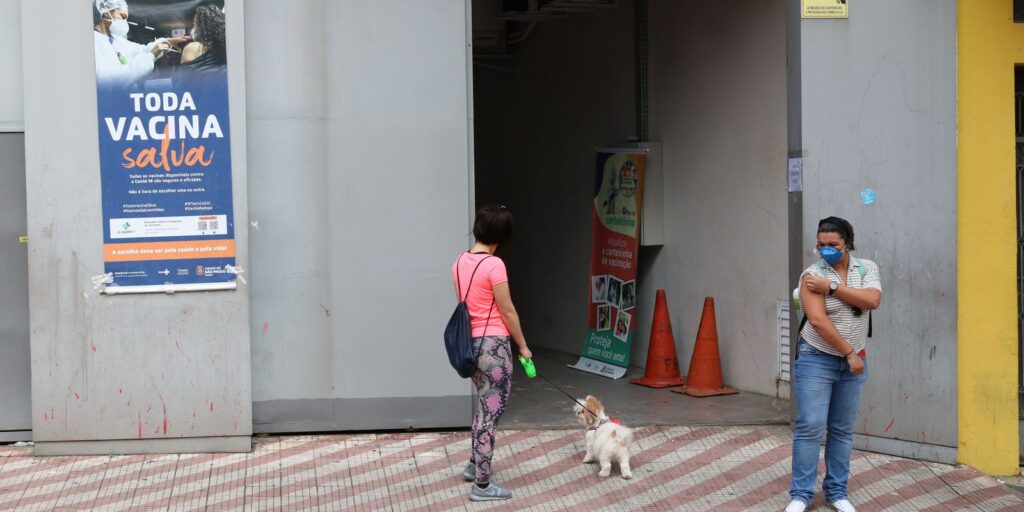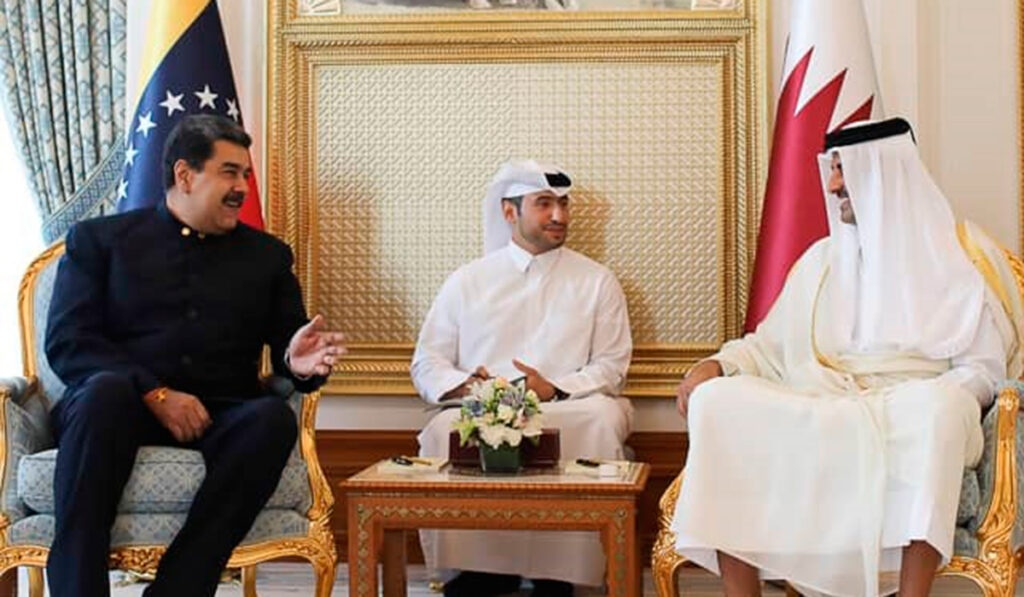Renewed as practice and study, artistic curatorship, this activity understood as a intermediation between works of contemporary art, artists, collections and an expanded publicor, it is resized from the perspective of a new breed of curators as rodrigo boatyes, Barbara Golubicki Y Bethlehem Colucciowho emphasize the importance of making contemporary scenes explicit, opening new readings and focusing on active listening to the collective curatorial process anchored in the present.
In charge of articulating the links between the public, the artists and the spaces where the works are exhibited according to a meticulous script that supposes rearrangements and crossings to put an artistic production in dialogue with the historical time that challenges it, the curators are the pieces decisive behind the exhibitions carried out by museums, galleries or cultural centers and their work has become more complex in recent times in tune with a scene mediated by the intersection of languages and the intervention of technology.
Not only that: confronted with a sign of the times that makes urgent demands regarding sexual diversity or the environmental crisis, the task of curating requires permanent updating and a fluid connection with the social discourses and narratives that break into digital formats. . What variables currently legitimize the work of curators? What are the challenges facing the new generations that join the art circuit to carry out their curatorial expertise?
What is it like to be a curator today in the face of new curatorial scripts that can be built from a “younger” perspective or other approach possibilities? “The interesting thing about being a curator today is that there is no unequivocal answer. From my perspective, curatorship is above all a practice, it is defined in doing, and it is above all collective – explains Golubicki to Télam-. It focuses on active listening: of the artist, of the archive material, of the heritage”.

“A new look (rather than young) is allowed to have a more affective responsibility with the work materialnot to impose or lower a line, but to open up and open new readings, not to close interpretations to theses or individual positions”, he says. And he highlights: “The curatorship is less about the author, less about thesis and more about shaking and disordering stagnant discourses” .
From a more formal position, Barcos maintains that “being a curator is the exercise and execution of that practice”and already from his personal point of view he indicates: “I think of curatorship as gestures, which do not necessarily have to be very obvious or marked. They can be more subtle and silent gestures where an authorial gaze is implicit, sometimes much more interesting, than decisions aesthetic and conceptual aspects linked to themes or issues on the public agenda”.
Between 2015 and 2018, Barcos directed the BÚM gallery in La Plata. In 2017 he participated in the National Art Biennial at the Bahía Blanca Museum of Contemporary Art and in 2019 of National Hall of Contemporary Art of the University of Tucumán. He currently works on the curatorial team of the Ricardo Rojas Cultural Center and in the Museum of Modern Art of Buenos Aires as a curatorial and research assistant.
“I think that the construction of a curatorial script has to do with that authorial vision, with a particular and specific look at art and the world”, the curator expands. And although “what is young” is associated “with novelty and an age range” -something with which he does not agree- he considers “that it is the consequence of a society that is terrified of aging and thinks so much about artistic production as well as bodies as disposable and interchangeable”.
“I relate to and understand youth as something genuine and lifel, which makes it possible to ask ourselves questions and exercise critical thinking or simply gives us the possibility of enjoyment, and that can be in an exhibition with works from the 1950s or with those produced this year,” says Barcos.

For his part, Coluccio expresses his interest in “give space to processes” and considers that “curators are no longer those art superstars that they were a decade or two ago.” The historian delimits the scope of the role: “I am interested in thinking about my role and that of my colleagues as articulators between the different institutional instances. I like to think that my curatorial practice is to be an interlocutor of the artists and their processes”.
“When we are in that germinal stage of a project, where it still seems that there is nothing, it is essential that someone can interpret it and give it value. Then the exhibition does not turn out to be the end of a curatorial process. Today we curators think of our expanded field as cycles of activities, spaces, programs, publications, links with communities or organizations”, he breaks down.
Coluccio (Buenos Aires, 1989) is an arts graduate from the UBA and is a member of the Public and Community Programs team of the National Directorate of Museums of the Ministry of Culture. She was assistant curator at the Museum of Modern Art in Buenos Aires in exhibitions such as “A history of the imagination in Argentina” and “Sergio De Loof: Did you feel yourself talking about me?”, and research assistant for the book “Feminisms and art Latin American” by Andrea Giunta, among other projects.
The curator is interested in taking up “those artist gestures observed in her work process or the words used to express herself.” For this, she avoids standardized constructions such as “the artist investigates or questions” and identifies “the precise actions that involve each one in the making of her work” and thus be able to open the plot to the public “. And also “That the show can tell about itself, show how it came to be, talk about the many people it involves.”
Another dimension of the practice is the design of the exhibition intended for an audience from museums and public institutions, private museums, art galleries, cultural centers, public space and even an artist’s workshop, explains Barcos and draws a difference: “the large institutions generally think about showings by putting the public in a central place, that is, blockbuster shows, easy period readings and trying to get as many people as possible to go”. On the other hand, “an exhibition in a cultural center perhaps seeks to review its own history and trajectory and the work of the exhibitions is related to a specific public that attended that same place decades before.”
From another place, Golubicki indicates: “Just as curating is a practice that unfolds within the framework of the collective, and therefore, attentive to a kind of conversation or social rumour, I do not conceive that the exhibitions detach themselves from the figure of the public or the spectator. In this plane, of course, the audiences appear in some way already segmented by the spaces in which the exhibition is put into practice. But you always have to think, without condescension, of the other who watches, or who participates in the show”, he explains.
Golubicki (1984, Buenos Aires) works in management, curatorship and art criticism. She studied art history (UBA) and participated as curator of the Artists Program of the Torcuato Di Tella University (2017/2018), coordinated the art spaces of the CCEBA (2011) and is co-director of the exhibition space “LAR-local de artes recent”, located in La Paternal.
“Today we know that a good part of the art system is no longer limited to the old model of the contemplative individual and that institutions today have a range of tools to introduce stimuli (education departments, workshops for children, press material, etc.) and the care system today is very different from that of the past”, says Golubicki, while Coluccio highlights the importance of the clarity of the texts that accompany the works, the relationship between the images shown and the way in which “the body runs through the place”.

“Art institutions and museums have sought in recent years to connect with specific communities, make room for their demands and desires, learn from their knowledge”, an important transition from “where society permanently re-creates an image of itself”, says Coluccio.
One more element is added from the confluence that Barcos has as an artist and curator who establishes the affective as something important in his practice: “the notion of the public is related to my affections, artist friends, curators, researchers, doctors, activists. a work or an exhibition I think of those affective relationships as the final recipient.According to the curator, “it may seem inbred at first reading, but in reality it arises from admiration for the look and sensitivity they have and how they develop in their work” , he says, a position that he draws from the poem by the artist Liliana Maresca that takes as a mantra: “love, the sacred, art / have no pretensions / are fleeting / appear where they are not called / are diluted,” he cites.
For Barcos, these words are a work guide because “the best encounter with art sometimes happens intimately and fleetingly, spontaneously. And that at the time of making an exhibition or thinking about an audience is impossible to plan”, he reflects .


















